The global fast food market, valued at USD 745.8 billion in 2022, is poised for substantial growth, projected to reach a staggering USD 1,087.31 billion by 2031 with a steady CAGR of around 4.5%.
This expansion is fueled by increasing urbanization, busy lifestyles, rising disposable income, and a growing youth population in emerging markets.
While North America dominates, regions like Asia Pacific and Latin America are rapidly catching up, driven by distinct factors like shifting food preferences and expanding economies. Mexico, in particular, is anticipated to experience the fastest growth due to its youthful population and thriving tourism sector.
In the fast-evolving landscape of the industry, technology plays a pivotal role, with online ordering and delivery platforms such as Uber Eats and DoorDash gaining prominence.
Health-conscious trends are rising, with fast-food chains incorporating healthier options like salads, wraps, and grilled items alongside traditional offerings. Sustainability is emerging as a significant trend, leading some chains to adopt eco-friendly packaging and sourcing practices.
However, the industry faces challenges and uncertainties, including potential disruptions from rising food costs, inflation, changing consumer preferences towards healthier options, and geopolitical instability. Despite these hurdles, the global fast-food market is expected to continue its growth trajectory.
Adaptability and innovation will be crucial for players to thrive, with anticipated trends including increased technological integration, menu diversification, and a heightened focus on healthier and sustainable choices to meet evolving consumer demands.
Chipotle SWOT Analysis
In essence, the future of the fast food market hinges on its ability to navigate challenges and cater to the dynamic preferences of consumers worldwide.
A comprehensive SWOT (Strengths, Weaknesses, Opportunities, Threats) analysis unveils the intricate workings behind Chipotle’s triumphs and challenges.
By dissecting its internal strengths and weaknesses while navigating external opportunities and threats, we gain a nuanced understanding of how this beloved brand continues to thrive in a dynamic industry.
Chipotle Overview
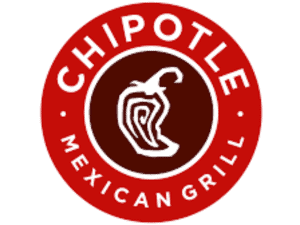
Founded in 1993 by Steve Ells in Denver, Colorado, Chipotle embarked on a mission to serve “food with integrity.”
Beginning with a single store emphasizing fresh, high-quality ingredients and sustainable practices, the chain experienced rapid growth in the 2000s, becoming a favorite among health-conscious consumers.
However, a setback occurred in 2015 when Chipotle faced foodborne illness outbreaks, negatively impacting its reputation and sluggish growth.
Under the leadership of CEO Brian Niccol, the company successfully navigated a recovery by focusing on operational efficiency, embracing digital ordering platforms, and implementing customer loyalty programs.
Chipotle is a successful and fast-growing company. By 2023, the company had more than 3,000 restaurants in the United States, Canada, Europe and Latin America.
Here are some of Chipotle’s company highlights:
Activities:
- Operates primarily in the United States, Canada, and Europe.
- Offers a limited menu of customizable burritos, tacos, bowls, and salads.
- Emphasizes fresh, locally sourced ingredients prepared in-house daily.
- Promotes sustainable practices throughout its supply chain.
- Has a strong digital presence with online ordering and delivery options.
Competitors:
- Direct: Qdoba Mexican Grill, Moe’s Southwest Grill, Taco Bell.
- Indirect: Fast-casual chains like Panera Bread, Saladworks, Five Guys.
- Traditional fast-food giants: McDonald’s, Burger King, Wendy’s.
Customers:
- Targets health-conscious consumers willing to pay a premium for fresh and high-quality food.
- Skews younger and more urban, with a strong millennial and Gen Z following.
- Appreciates Chipotle’s commitment to sustainability and ethical sourcing.
Strategies:
- Focus on digital ordering and delivery to cater to changing consumer preferences.
- Expand loyalty programs and reward initiatives to increase customer retention.
- Explore new menu options and promotions while maintaining core brand identity.
- Invest in employee training and development to improve customer service and operational efficiency.
- Prioritize sustainability throughout its operations, attracting environmentally conscious consumers.
Key Figures:
- Number of stores: Over 2,700 worldwide (as of August 2023).
- Sales: USD 8.16 billion in 2022, with consistent year-over-year growth.
- Number of countries: 5 (United States, Canada, United Kingdom, France, Germany).
- Average customer spend : USD 14.63 per transaction.
- Employee count: Over 90,000 globally.
Chipotle is a company that has set itself apart from the competition by offering authentic, quality Mexican cuisine. The company’s commitment to using fresh, high-quality ingredients is key to its success.
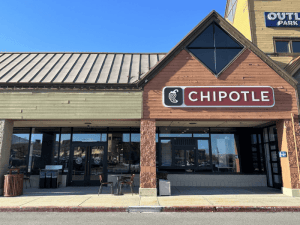
We now turn to the results of the SWOT analysis of Chipotle Mexican Grill:
The internal analysis of Chipotle
SWOT is a strategic planning tool that allows us to analyze a company’s strengths and weaknesses, determine its future expansion strategies, and consider the opportunities and threats of its current markets.
In this section, we will focus on analyzing the strengths and weaknesses of Chipotle to discover the various internal factors.
The strengths of Chipotle
According to our investigation, Chipotle boasts several strengths that give it an edge over its direct competitors:
1. Brand Recognition and Reputation:
Chipotle is synonymous with fresh, high-quality, and ethically sourced food. This reputation resonates with health-conscious consumers and sets them apart from competitors like Qdoba or Moe’s, who often need help to differentiate themselves.
2. Superior Ingredient Quality:
Chipotle’s commitment to using fresh, locally sourced ingredients prepared in-house daily distinguishes it from competitors who rely on frozen or pre-processed ingredients. This translates to tastier, more authentic flavors and an overall healthier perception.
3. Focus on Sustainability:
Chipotle’s strong emphasis on sustainable practices throughout its supply chain resonates with environmentally conscious consumers.
Initiatives like supporting responsible farming and humane animal treatment give it a leg up over competitors who still need to prioritize these aspects.
4. Customizable Menu:
Chipotle’s simple and customizable menu allows customers to tailor their meals to their preferences, dietary needs, and taste buds. This flexibility provides a clear advantage over competitors with fixed menu options that lack customization.
5. Digital Ordering and Delivery:
Chipotle embraces digitalization with its online ordering and delivery platforms, catering to consumers’ ever-growing reliance on convenience. This puts it ahead of competitors with a limited digital presence.
6. Customer Loyalty Programs:
Chipotle’s robust loyalty programs reward repeat customers, fostering brand loyalty and encouraging frequent visits. This contrasts with competitors’ weaker loyalty offerings, making it harder for them to retain customers.
7. Premium Positioning:
Chipotle’s slightly higher price points compared to competitors reflect the quality of its ingredients and sustainable practices. This premium positioning attracts value-conscious consumers who prioritize quality over affordability.
While each competitor has its strengths, Chipotle’s combination of brand recognition, superior ingredient quality, sustainability focus, and adaptability to evolving consumer trends solidifies its position as a fast-casual Mexican grill market leader.
However, maintaining these strengths and remaining responsive to future challenges will be crucial for Chipotle to stay ahead of the competition.
The weaknesses of Chipotle
Despite its strengths, Chipotle does have some weaknesses that its direct competitors can exploit:
1. Limited Menu Diversity:
While Chipotle’s focus on fresh ingredients and customization works for some, its limited menu, compared to competitors like Qdoba or Moe’s, can alienate customers who crave variety.
These competitors offer more options like quesadillas, nachos, and bowls, broadening their appeal.
2. Higher Price Point:
Chipotle’s premium positioning translates to higher prices than its competitors. This can be a barrier for budget-conscious consumers, especially during challenging economic times.
Qdoba and Moe’s often offer deals and promotions, making them more appealing to price-sensitive customers.
3. Dependence on Limited Suppliers:
Chipotle’s commitment to sourcing sustainable ingredients from a network of independent suppliers exposes it to potential supply chain disruptions.
A supplier’s issues can impact ingredient availability and menu options. Competitors with more diverse sourcing networks may be less vulnerable to such disruptions.
4. Past Food Safety Incidents:
Chipotle faced significant challenges due to foodborne illness outbreaks in 2015. While they have recovered, these incidents remain a reputational blemish that competitors can leverage to raise concerns about food safety. Building and maintaining trust takes time and effort.
5. Slower Expansion:
Chipotle’s focus on quality and sustainability has led to a slower expansion compared to competitors. This leaves room for rivals like Qdoba and Moe’s to fill market gaps and establish a more substantial presence in new regions.
6. Labor Challenges:
Chipotle faces challenges attracting and retaining qualified employees due to the higher demands of its fresh-ingredients concept and potentially lower wages than other fast-food chains. Competitors with simpler operating models may have an easier time finding and keeping staff.
These weaknesses offer opportunities for Chipotle’s competitors to gain an edge. However, Chipotle’s strengths are still significant, and they are actively working on addressing these weaknesses through initiatives like menu expansion, loyalty programs, and improved employee training.
The ultimate success will depend on how effectively Chipotle can mitigate its weaknesses while leveraging its strengths in the competitive fast-casual Mexican grill market.
The external analysis of Chipotle
The primary objective of conducting an external analysis for a company is to understand external factors beyond its control that could influence its success.
This analysis aids the company in making well-informed decisions regarding its strategy, operations, and future trajectory. The external analysis delves into two main aspects: opportunities and threats.
On the opportunities front, the analysis involves:
- Identifying potential markets for expansion.
- Exploring emerging technologies and trends that the company can leverage.
- Recognizing unmet customer needs that the company can address.
This proactive approach allows the company to capitalize on favorable external conditions and strategically position itself for growth.
Conversely, the analysis also focuses on threats, encompassing the anticipation of industry changes that may adversely affect the company, identifying new competitors entering the market and acknowledging potential disruptive technologies that could render the company’s offerings obsolete.
By addressing opportunities and threats, companies can navigate their external environment more effectively and enhance their competitiveness.
Let’s move on to Chipotle’s current and potential opportunities and threats without further ado.
The opportunities of Chipotle
Chipotle Mexican Grill, known for its fresh, high-quality ingredients and commitment to sustainability, is positioned to exploit several current and potential opportunities in the fast-casual dining landscape. Here’s a look at the sizzle:
Current Opportunities:
- Digital Growth: Online ordering and delivery are booming, and Chipotle is riding the wave. Expanding digital platforms and partnerships with primary delivery services can further unlock sales potential and cater to customers’ preferences for convenience.
- Loyalty Programs: Chipotle’s existing loyalty programs have been successful, but further gamification, personalized rewards, and exclusive offerings can boost customer engagement and drive repeat business.
- International Expansion: While Chipotle has a strong US presence, venturing into new emerging markets with high demand for fast-casual and healthy options, like Asia, can unlock significant growth potential. Adapting menus to local palates while staying true to its core values can be critical.
- Menu Innovation: While Chipotle’s core menu is beloved, introducing seasonal limited-time offers and experimenting with new ingredients and flavor combinations can keep things fresh, attract new customers, and boost excitement.
- Technology Integration: Implementing AI-powered kiosks for faster ordering, bright kitchens for operational efficiency, and personalized recommendations can enhance the customer experience and improve overall restaurant performance.
Potential Opportunities:
- Plant-Based Options: The plant-based protein market is exploding, and Chipotle can become a leader in this space. Introducing innovative plant-based versions of their signature dishes can attract new customers and capitalize on the trend.
- Sustainability Expansion: Building on its commitment to sustainable practices, Chipotle can further partner with local farmers, source eco-friendly packaging, and promote transparency in its supply chain. This resonates with environmentally conscious consumers and strengthens its brand image.
- Drive-Thru and Convenience Initiatives: While traditionally focused on dine-in and pick-up, exploring convenient options like drive-thrus or quick pick-up locations can tap into the ever-increasing demand for speed and ease.
- Catering and Events: Expanding its catering services for corporate events and gatherings can be a lucrative opportunity to showcase the Chipotle brand and reach a wider audience.
- Community Engagement: Strengthening local partnerships and supporting community initiatives can build goodwill and brand loyalty, creating a positive image beyond food.
By capitalizing on these opportunities and staying true to its core values, Chipotle can solidify its position as a leader in the fast-casual dining market.
However, it must also navigate potential challenges like rising ingredient costs and intense competition while maintaining its unique brand identity while expanding.
The threats of Chipotle
Chipotle Mexican Grill, despite its strengths, faces a landscape of potential threats that could derail its fiery journey. Here’s a look at the likely heatwave it might encounter:
Current Threats:
- Rising Costs: Inflationary pressures and increasing costs of ingredients and labor could squeeze Chipotle’s profit margins, forcing them to raise prices or compromise on quality, potentially alienating customers.
- Competition: The fast-casual market is fiercely competitive, with new and established players offering similar or cheaper alternatives. Chipotle needs to innovate and differentiate itself to stand out continuously.
- Food Safety Concerns: Past foodborne illness outbreaks have impacted Chipotle’s brand image. Maintaining stringent quality control and transparent communication about its practices will be crucial for regaining trust.
- Limited Menu Variety: While Chipotle focuses on customization appeals, some customers may crave more diverse options like quesadillas or nachos, leaving them vulnerable to competitors with broader menus.
- Labor Challenges: Attracting and retaining qualified employees in a tight labor market can be difficult, leading to operational challenges and potentially impacting customer service and overall experience.
Potential Threats:
- Economic Downturn: If economic conditions worsen, consumers may opt for cheaper dining options, impacting Chipotle’s business. Building resilience through cost-management strategies and value-driven promotions will be essential.
- Shifting Consumer Preferences: With evolving food trends and dietary choices, Chipotle needs to keep its finger on the pulse and adapt its offerings to cater to new demands, like more plant-based options or healthy dessert alternatives.
- Disruptive Technologies: New food delivery models or automation advancements could disrupt the traditional fast-casual experience. Embracing technological advancements and optimizing their integration will be crucial to stay ahead of the curve.
- Unforeseen Events: Pandemics, natural disasters, or even food supply chain disruptions can pose significant challenges. Building flexibility and contingency plans will be crucial to mitigating unforeseen risks.
By acknowledging and proactively addressing these threats, Chipotle can navigate the competitive landscape and continue its sizzling success.
Adaptability, innovation, and a steadfast commitment to quality will be its best tools for navigating these potential pitfalls.
SWOT Analysis Matrix of Chipotle
To summarize the results of the Chipotle SWOT analysis, we present the following SWOT matrix:
| Strengths | Weaknesses |
| Brand Recognition and Reputation; Superior Ingredient Quality; Focus on Sustainability; Customizable Menu; Digital Ordering and Delivery; Customer Loyalty Programs; Premium Positioning. | Limited Menu Diversity; Higher Price Point; Dependence on Limited Suppliers; ast Food Safety Incidents; Slower Expansion; Labor Challenges. |
| Opportunities | Threats |
| Digital Growth; Loyalty Programs; International Expansion; Menu Innovation; Technology Integration; Plant-Based Options; Sustainability Expansion; Drive-Thru and Convenience Initiatives; Catering and Events; Community Engagement. | Rising Costs; Fierce Competition; Food Safety Concerns; Limited Menu Variety; Labor Challenges; Economic Downturn; Shifting Consumer Preferences; Disruptive Technologies; Unforeseen Events. |
Conclusion
On one hand, this SWOT analysis of Chipotle helped us to identify the company’s strengths and weaknesses.
Conversely, it will allow the company to understand current and potential opportunities and threats in the global fast-food market. Thanks to this SWOT analysis, Chipotle’s managers will be able to make the right strategic choices.
Additionally, the SWOT framework enables the development of contingency plans to mitigate potential risks and threats, positioning the company for long-term success by anticipating and adapting to changes in the market.
SWOT Analysis Examples 2024
There is no better way to understand how to conduct a SWOT analysis at your company than with a concrete example.
Below you will find our free, up-to-date, and concrete examples of SWOT analyses of large companies and multinationals conducted in 2024.
Chick-fil-A SWOT analysis
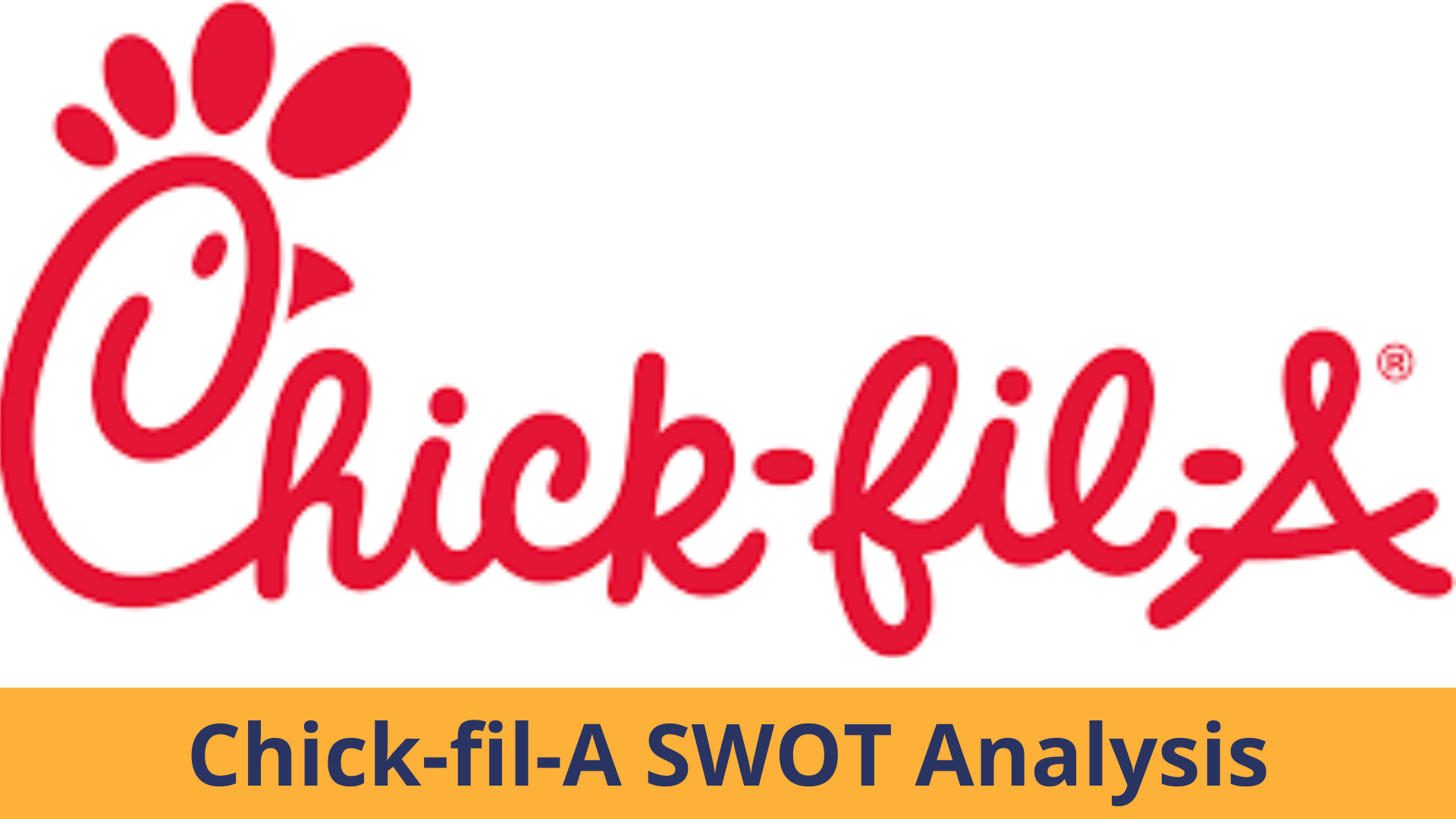
SWOT analysis of Spotify


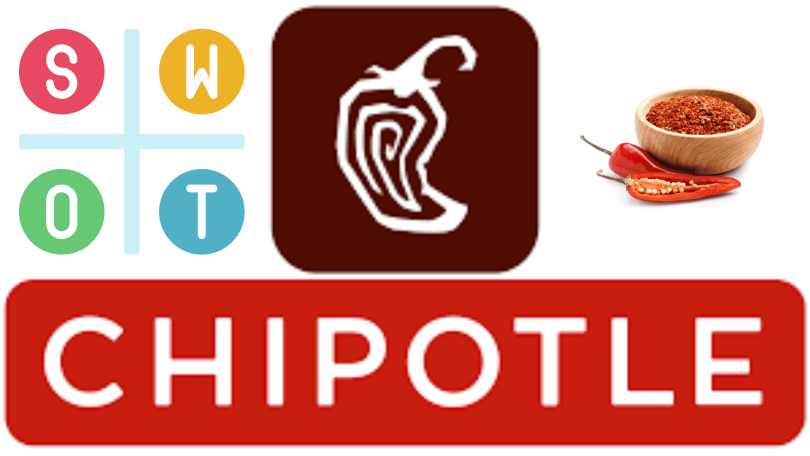










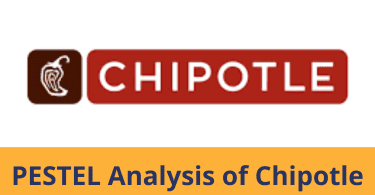

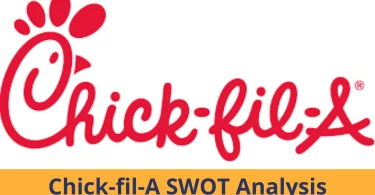


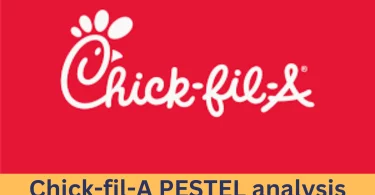
Leave a Comment